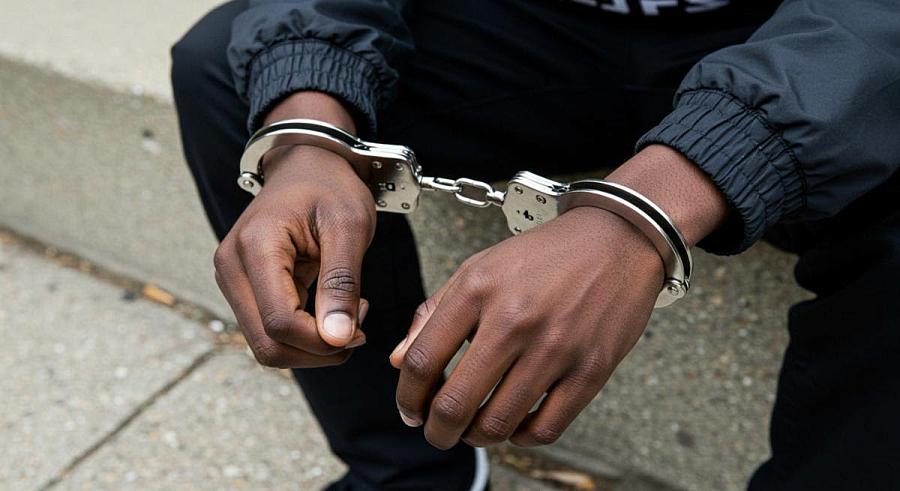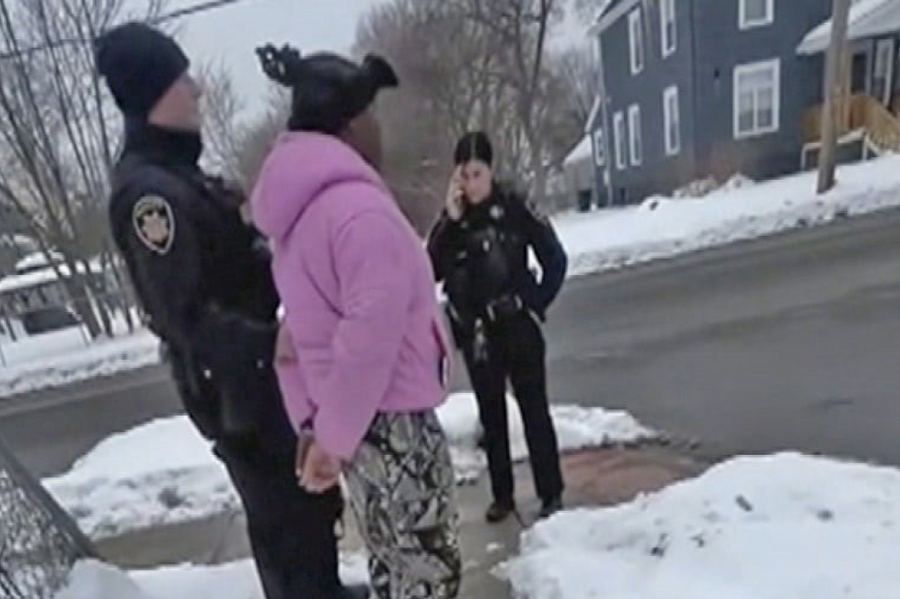The Health Divide: A disproportionate share of Black youth are placed in handcuffs, resulting in years of trauma

I’ve been handcuffed twice in my life, and I remember both events clearly.
The first time was in seventh grade, when I fought with a kid who had been bothering me for weeks at school. The police arrived because my bully had a bloody nose. An officer from the 7th District Police Department came quickly. He saw the kid’s injury and told me to put my hands behind my back. I cried as I complied, feeling scared and powerless. The officer hesitated before putting the cuffs on me.
He placed me in the back of his squad car and drove me to the police station. He gave me a serious talk about managing my emotions before taking me inside and calling my father.
The second time I was handcuffed was when I got pulled over on the highway for speeding. I was 18 and on my way to retrieve my wallet, which I had left at the Port Washington bureau of the Milwaukee Journal Sentinel the night before. I was cuffed for speeding and for driving without my license. I spent four hours behind bars before my job bailed me out.
Both experiences, along with several instances of driving while Black,are unforgettable and likely contribute to my negative feelings toward the police. Today, Black children as young as 10 are being handcuffed by law enforcement. Some experts suggest that this plays a role in the two-thirds of African Americans who don’t trust the police to treat them fairly.
There can be enduring health effects from these arrests as well, as a growing body of research has shown. “Arrest before age 25 was associated with worse physical and mental health — and even death in adulthood,” a 2023 study in Academic Pediatrics found. “Child arrest was disproportionately experienced by Black children.”
Black children accounted for over 50% of those subjected to force
The recurring stories catch your attention: African American children being placed in handcuffs or detained by police, only to find out that the child had nothing to do with the original incident or that the use of handcuffs was unwarranted.

An 11-year-old Black girl was placed in handcuffs in Syracuse, New York last month, after police mistook her for a car theft suspect.
(Photo via Onondaga County Sheriff's Office)
Here are just some recent examples:
In January in Syracuse, New York, Onondaga County Sheriff’s deputies handcuffed an 11-year-old Black girl after claiming she matched the description of a car theft suspect.
The sheriff stated that the girl was dressed similarly to the person they were searching for, and they restrained the crying child just a few blocks from where the car had been reported stolen. (According to the sheriff’s office, the dashcam from a deputy’s patrol vehicle recorded the suspect fleeing from the stolen vehicle.)
In the video, the girl stands on a snow-covered sidewalk with her hands cuffed behind her back, flanked by two deputies. After being handcuffed for over seven minutes, the deputies realized their mistake.
Sheriff Tobias Shelley said he met with the girl’s mother to address her concerns.The sheriff’s office announced it would change its policy “to notify a parent or guardian of any juvenile detained for criminal investigative purposes, regardless of how brief the encounter is.”
The New York Civil Liberties Union said in a statement that the organization was “extremely disturbed by the aggressive treatment of an 11-year-old Black child at the hands of Syracuse Sheriff’s deputies, and their failure to notify the child’s parents.”
In May, McKenna Lombardo, a 10-year-old Black girl, was placed in handcuffs and arrested at Cryar Intermediate School in Conroe, Texas, after teachers called the police because she was “throwing markers" and being “physically aggressive.”
The fifth grader, who has special needs, explained that before the police were called to the school, she argued with a friend in class. She stated that she blocked the door, and her teacher’s arm got in the way, but she didn’t intend to hurt anyone. McKenna was handcuffed and placed in the back of a squad car.
The arrest also comes just a year after the passing and enactment of a new Texas law called the “No Kids in Cuffs” law, which states that a peace officer “may not restrain a student enrolled in fifth grade or below unless the student poses a serious risk of harm to themselves or another person.”
The teacher, who contacted the police, stated that she did not want to press charges against McKenna, but she changed her mind after speaking with one of the officers and another faculty member.
Her treatment fits a broader trend as well. Nationwide, Black students face discipline are kicked out of school and face discipline at far higher rates than white students.
In 2023, a 12-year-old Black boy named Tashawn Bernard was handcuffed and arrested in Lansing, Michigan. Police referred to it as an “unfortunate case of ‘wrong place, wrong time.’” Officers were investigating multiple Kia car thefts. A witness described one suspect as wearing neon shorts and a white shirt. An officer saw someone who “matched that description” and attempted to stop him, but the person fled.
Cellphone video depicted an officer guiding Tashawn through a parking lot with his hands cuffed behind his back. In the video, a voice states that the "kid" was "taking out his trash to the dumpster."
In 2021, the Associated Press analyzed data on 3,000 instances of police use of force against children under 16 over the past 11 years, provided by Accountable Now. The analysis included incidents from 25 police departments across 17 states, reflecting a small fraction of the 18,000 police agencies nationwide.
The findings revealed troubling trends: Black children made up over 50% of those subjected to force, despite representing only 15% of the U.S. child population. Along with other minorities, Black kids are often perceived as older by police.
Commonly used types of force included takedowns, strikes, and muscling, along with firearms directed at children. Meanwhile, tactics like pepper spray and police dogs were less frequently employed.
A Black youth shared his experience of being profiled
Anissa Durham, a 2022 Data Fellow at the Center for Health Journalism, spent six months reporting on the abuse and mistreatment faced by Black youth. In her story, “Life and Death: When Police Criminalize Young Black Men,” she focused on Abraham Jarvis, a young Black man who was racially profiled by the police in San Diego.
In July 2022, Jarvis visited a store. After changing lanes on his drive back, the police pulled him over. When an officer asked why he seemed nervous, he was already on FaceTime with his parents. The police asked Jarvis, 18, a series of questions, including whether he had drugs or guns in the car and if he had committed a crime recently, and why his heart was racing. The officers then told him to exit the vehicle, or they would pull him out. Jarvis did not allow them to search the car but complied out of fear for his life. He was handcuffed and placed in the back of a police car.
“I’ve never experienced something like that where I felt so powerless,” Jarvis told Durham. “Because it’s like you’re stripping away my freedom.”
Durham reported that Black people make up 6% of San Diego's population, but they are involved in a quarter of all use-of-force incidents. She also reported that having police in schools leads to more arrests of Black students for minor issues and harsher punishments. And Black students with disabilities are more likely to end up in the criminal justice system.
As journalists, we must remain vigilant for stories of police abuse, especially towards Black and marginalized youth, who often lack a voice. Such arrests and detainments continue to harm children’s mental health and well-being, and it leads them to grow into adults who view police interactions as inherently harmful. I certainly did when I was first handcuffed 41 years ago.

